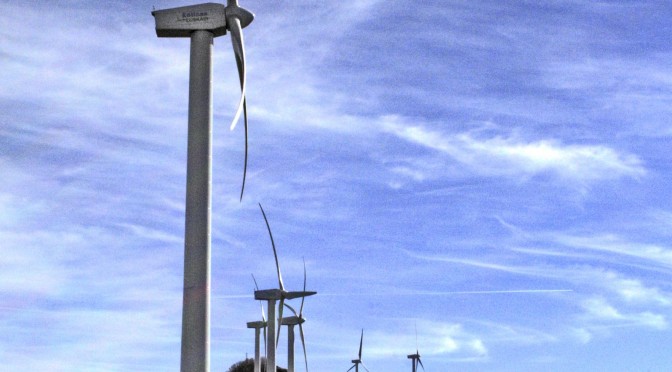EVWIND
Premiums for renewable energy are always controversial, often without reason. What are these myths about wind energy and how much truth there is in each?
Myth 1: Premiums for renewables (and, therefore, to the wind energy) is guilty of the tariff deficit.
Premiums are incentives born in Spain in the nineties with the aim of promoting indigenous energy and development clean (renewable), instead of penalizing the most polluting.
This established the Special Scheme in the electricity sector, where they were integrated all the technologies (wind energy, solar power, geothermal energy, small hydro and biomass, as well as cogeneration), wanted to encourage clean energy.
Therefore, it is obvious that the more electricity is produced with renewable energy, a goal common to all industrialized countries and many emerging-the greater the amount to be paid as bonuses. Premiums is a cost of power system, such as transportation, distribution, and so on.
These incentives are only attributable to the tariff deficit, which is the difference between what it costs them to produce electricity companies and take it to the consumer and so-entering when a deviation between what the Government planned to cost and actual cost.
Wind energy received 1,756 million euros in 2011 in bonuses and allowances, according to data from the National Energy Commission (CNE). This represents an 12.46% less than the amount collected in 2010. And it means that the contribution of wind power to increase the tariff deficit was zero in 2011.
Premiums for wind energy accounted for 31.2% of the total received by renewables in the year and its production, 62% of the total generated by renewables.
Myth 2: Wind power is expensive. Not at all. Do you know what costs each average Spanish household premiums for the wind energy? 1.3 euros per month. According to data from the CNE, in the last five years, wind power generation has increased 76% to 138 TWh. In that period, premiums totaled sector 5,200 million euros.
If those 138 TWh gas had been produced, the cost of importing this gas would have been EUR 5,000 million. In short: 5,200 million euros in bonuses to the wind power we have stayed in Spain and have avoided spending abroad of more than 5,000 million euros. 5,200 million which have led to the development of a strong wind energy industry, with international projection, which has created thousands of jobs and generated R & D + i.
Instead of importing more fossil fuels, we have exported wind turbines, know-how, and a modern and innovative image of Spain, something that can not boast many sectors of our economy.
Myth 3: Premiums are higher in Spain than in other countries. This myth is very easy to remove, and you just have to look at the numbers: if in Spain is paid 81 euros to wind power for the MWh (for facilities that qualify for the rate-regulated) in Germany are 89 euros, in France is reached in some cases to 130 euros, and in the UK range from 62 to 132 euros, to name a few.
In addition, the wind power sector is far from being profitable without premium. This will depend largely on the price of a barrel of oil: the most widely accepted estimate is that the wind power will be competitive with the Brent barrel above $ 160.
The problem is that in Spain remains one last boost in the form of incentives to achieve the desired competitiveness. Without that push, you run the risk of throwing away twenty years of effort and 25,000 million euros in investment.
And if Spain wants to return to bet on the wind turbines will have to import from abroad rather than exporting.
Myth 4: The wind energy has risen above the targets. Nor that is true. The wind power industry has developed exemplary (the European Commission in 2007 analyzed the incentive systems of the EU and concluded that Spain was the most efficient from an economic point of view) and scrupulously fulfilled the objectives of the PER 2005 -2010 at the time that was necessary to do so.
The government should not forget that the history of wind energy sector in Spain is a success story, cited as an example throughout the world. So much so, that could serve as a model for the much needed change of production pattern that needs to Spain.
In this context, does not make sense to continue investing in wind energy? If all countries are doing great and Spain is the world leader, the big question is can we afford not to.
http://www.evwind.com/2012/08/14/mitos-sobre-la-energia-eolica/


